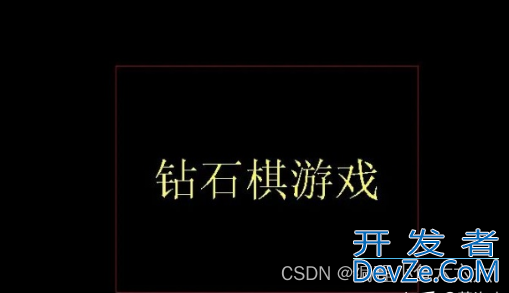Spring中将Service注入到Servlet中的四种方法
目录
- 方法一:php使用 @WebServlet 和 @Autowired
- 实现步骤:
- 方法二:通过 @Bean 注册Servlet并注入依赖
- 实现步骤:
- 方法三:通过 @Component 和 SpringBeanAutowiringSupport
- 实现步骤:
- 方法四:Spring Boot 和 ServletRegistrationBean
- 实现步骤:
- 总结
方法一:使用 @WebServlet 和 @Autowired
如果你使用的是Servlet 3.0+规范,可以直接使用@WebServlet注解来声明Servlet,并通过@Autowired将Service注入。
实现步骤:
配置Servlet扫描支持
确保你的项目已经启用了Spring的组件扫描,以及Spring与Servlet容器的集成配置(如通过@SpringBootApplication或手动配置Spring上下文)。定义Service类
@Service
public class MyService {
public String process() {
return "Service processing...";
}
}
- 定义Servlet类
@WebServlet(name = "myServlet", urlPatterns = "/myServlet")
public class MyServlet extends HttpServlet {
@Autowired
private MyService myService;
@Override
protected void doGet(HttpServletRequest req, HttpServletResponse resp) throws ServletException, IOException {
String result = myService.process();
resp.getWriter().write("Result from service: " + result);
}
}
- Spring配置(可选)
如果使用Spring Boot,确保@SpringBootApplication已经启用了@ServletComponentScan,如下:
@SpringBootApplication
@ServletComponentScan
public class MyApplication {
public static void main(String[] args) {
SpringApplication.run(MyApplication.class, args);
}
}
方法二:通过 @Bean 注册Servlet并注入依赖
如果你不想使用@WebServlet注解,可以通过Spring的@Configuration将Servlet作为一个Spring Bean注册到Servlet容器中。
实现步骤:
- 定义Service类
@Service
public class MyService {
public String process() {
return "Service processing...";
}
}
- 定义Servlet类
public class MyServlet extends HttpServlet {
private final MyService myService;
public MyServlet(MyService myService) {
this.myService = myService;
}
@Override
protected void doGet(HttpServletRequest req, HttpServletResponse resp) throws ServletException, IOException {
String result = myService.process();
resp.getWriter().write("Result from service: " + result);
}
}
- 配置Servlet注册在Spring配置类中,注册Servlet Bejavascriptan并将Service注入:
@Configuration
public class ServletConfig {
@Bean
public ServletRegistrationBean<MyServlet> myServletRegistrati编程客栈on(MyService myService) {
return new ServletRegistrationBean<>(new MyServlet(myService), "/myServlet");
}
}
方法三:通过 @Component 和 SpringBeanAutowiringSupport
如果使用的是传统的Servlet(如在web.XML中定义的Servlet),你可以通过Spring的SpringBeanAutowiringSupport手动启用依赖注入。
实现步骤:
- 定义Service类
@Service
public class MyService {
public String process() {
return "Service processing...";
}
}
- 定义Servlet类
public class MyServlet extends HttpServlet {
@Autowired
private MyService myService;
@Override
public void init() throws ServletException {
super.init();
SpringBeanAutowiringSupport.processInjectionBasedOnCurrentContext(this);
}
@Override
protected void doGet(HttpServletRequest req, HttpServletResponse resp) throws ServletException, IOException {
String result = myService.process();
resp.getWriter().write("Result from service: " + result);
}
}
- 配置Servlet容器如果使用
web.xml,添加Servlet配置:
<servlet>
<servlet-name>myServlet</servlet-name>
<servlet-class>com.example.MyServlet</servlet-class>
</servlet>
<servlet-mapping>
<servlet-name>myServlet</servlet-name>
<url-pattern>/myServlet</url-pattern>
</servlet-mapping>
- Spring Context 配置确保你的Sjavascriptpring上下文加载到Servlet容器中,例如在
web.xml中定义Spring监听器:
<listener>
<listener-class>org.springframework.web.context.ContextLoaderListener</listener-class>
</listener>
<context-param>
<param-name>contextConfigLocation</param-name>
<param-value>/WEB-INF/applicationContext.xml</param-value>
</context-param>
方法四:Spring Boot 和 ServletRegistrationBean
如果你使用的是Spring Boot,推荐使用ServletRegistrationBean来实现Servlet注册并注入依赖。
实现步骤:
- 定义Service类
@Service
public class MyService {
public String process() {
return "Service processing...";
}
}
- 定义Servlet类
public class MyServlet extends HttpServlet {
private final MyService myService;
public MyServlet(MyService myService) {
this.myService = myService;
}
@Override
protected void doGet(HttpServletRequest req, HttpServletResponse resp) throws ServletException, IOException {
String resultphp = myService.process();
resp.getWriter().write("Result from service: " + result);
}
}
- 配置Servlet注册在Spring Boot的配置类中,注册Servlet:
@Configuration
public class ServletConfig {
@Bean
public ServletRegistrationBean<MyServlet> myServletRegistration(MyService myService) {
return new ServletRegistrationBean<>(new MyServlet(myService), "/myServlet");
}
}
- 运行应用通过Spring Boot启动类运行应用:
@SpringBootApplication
public class MyApplication {
public static void main(String[] args) {
SpringApplication.run(MyApplication.class, args);
}
}
总结
以上四种方法可以根据项目需求和技术栈选择适合的方案:
- 如果使用
@WebServlet,直接使用@Autowired注解。 - 如果需要更灵活的控制,可以通过
ServletRegistrationBean注册Servlet。 - 如果使用传统的
web.xml配置,可以借助SpringBeanAutowiringSupport实现依赖注入。 - Spring Boot推荐使用
ServletRegistrationBean进行Servlet注册。
在实际开发中,使用Spring Boot可以简化配置流程,是优先推荐的方案!
到此这篇关于Spring中将Service注入到Servlet中的四种方法的文章就介绍到这了,更多相关Spring Service注入到Servlet内容请搜索编程客栈(www.devze.com)以前的文章或继续浏览下面的相关文章希望大家以后多多支持编程客栈(www.devze.com)!






 加载中,请稍侯......
加载中,请稍侯......
精彩评论